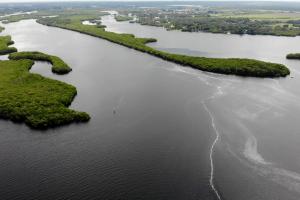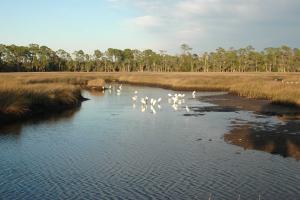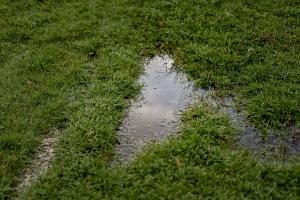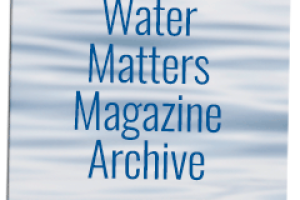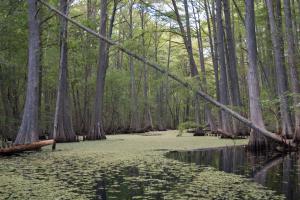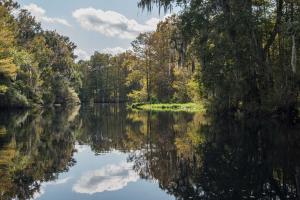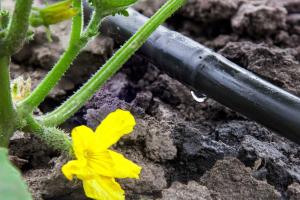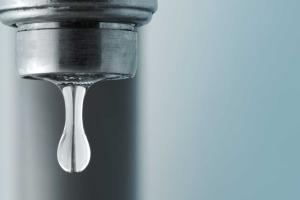Search Content
Displaying results 2701 - 2720 of 5020
Peace River Challenges and RestorationNatural factors, such as the geology of the region and rainfall, contribute to the amount of water recharging the Upper Floridan aquifer and surface water bodies in the area as do human influences, such as groundwater use. There have also been substantial changes to the Peace River watershed over the past 150-200 years, including the clearing, draining and re-contouring of lands for phosphate mining, agriculture and urban…
The Springs Coast Watershed features one of the largest and most spectacular expanses of salt and brackish marshes found in Florida. Four of the five springs groups in the watershed discharge directly into the Gulf of America in a region that is the second largest seagrass area in the continental United States. With an estimated 700,000 acres — the size of more than 530,000 football fields — the Springs Coast seagrass area is one of the largest seagrass areas in the world.As…
Your Questions AnsweredNovember 2021Florida has the largest concentration of springs in the world, with more than 200 springs within the boundaries of the Southwest Florida Water Management District. These natural wonders rely on rainfall to replenish their water source, and Dr. Madison Trowbridge explains how the rainy season provides big benefits for Florida’s springs.Q: What is spring flow?A: Spring flow is the amount of water that…
Addressing Drainage Complaints and IssuesAre you experiencing flooding or drainage not caused by a storm event? Confused about which government agency to reach out to for help? Use this reference guide to find out who to contact. Contact the Southwest Florida Water Management District for drainage complaints or issues related to:
- Stormwater management systems (i.e. retention ponds, swales, etc.) in District-…
Seek the Leak
Did you know that even a small leak can waste 300 or more gallons of water per month? Check for the following leaks outdoors:
Water Faucets, Hoses and Connectors
Check all faucets, hoses and connectors periodically for leaks and to make sure they are in good working order. Make sure faucets are closed when not in use. If you do find a leaky faucet, change the washer — after turning off the shutoff valve.
Automatic Lawn and Sprinkling Systems
Soft…
Regular irrigation maintenance is important to reduce water waste and help create a healthy environment for your landscape. Look for Broken or Misdirected Sprinkler Heads Sprinkler heads can accidently be knocked during lawn maintenance or from a passerby. Look for these signs of a broken or misdirected sprinkler head.
- Water is shooting into the air or not spraying correctly.
- Water is pooling around the base of a sprinkler head.
- …
A group of kayakers armed with gloves and garbage bags launched their vessels from the Clam Bayou Nature Park. The volunteers, led by Kurt Zuelsdorf, were on a mission to collect trash from the mangrove-lined Clam Bayou.
Zuelsdorf was able to bring together this eco-minded band of volunteers through a District Community Education Grant he applied for and received this spring. The $3,512 grant was used to pay for the volunteers’ kayak rentals, trash bags and equipment…
On a crisp November morning, District staff and members of the Alafia River Basin Board launched four canoes into the Alafia River. The basin includes the southern half of Hillsborough County and the southwestern portion of Polk County. The Basin Board members set out to experience the river — the most important part of the basin — and to talk with some concerned citizens who live along the river.
The canoe trip took place along part of the 13-mile portion of the…
Two officers of the District Governing Board are stepping up to new leadership roles, and two Board members are serving their first terms as officers.
The District Governing Board unanimously elected Ronald E. Oakley to serve as Governing Board chair during its May meeting. Oakley served as the Board treasurer and vice chair before his election as chair.
“I’m excited to continue to work to protect our natural resources, and I’m humbled that the Board would place so…
Our journey along the Withlacoochee River begins in the cypress domes and forested wetlands of the Green Swamp. Four rivers emerge from this large oasis between Tampa and Orlando. It is an area of ecological and hydrologic importance because of its ability to store surface water and slow floodwaters while sustaining flow to multiple rivers and streams. The Green Swamp also supplies water to the aquifer, which isn’t too far below the land’s surface in…
As the District’s General Counsel, Chris Tumminia provides advice and counsel to the District’s Governing Board, executive director and District staff regarding matters of law and policy. His primary areas of practice have included civil and administrative litigation, water use permitting, minimum flows and levels, and water supply planning. Tumminia also has represented the District in numerous proceedings before the State of Florida Division of Administrative Hearings,…
For Mark Brown, environmental science is more than just a career. It is his personal interest.
Brown spent part of his childhood growing up on a farm in Georgia. Influenced by his grandfather, who was a soil conservationist for the USDA Soil Conservation Service, Brown developed his interest in natural habitat protection and restoration early on.
When his family spent summer vacations in Florida, he became interested in the wide variety of natural ecosystems in the…
Your Questions Answered
April 2020
You may have noticed, we haven’t seen much rainfall around the District. Southwest Florida Water Management District Hydrologic Data Manager Granville Kinsman is our resident expert on hydrologic conditions and has details about our current rainfall pattern.
Q: What is the normal rainfall cycle in central Florida?
A: Rainfall is seasonal. Our rainy season is a four-month…
A watershed is an area of land that water flows across as it moves toward a common body of water, such as a stream, river, lake or coast. Watersheds are defined by the way water flows across the land and are shaped by features and elevations on the surface of the land.The Withlacoochee River watershed covers approximately 2,100 square miles within eight counties — Citrus, Hernando, Lake, Levy, Marion, Pasco, Polk and Sumter.…
Your Questions Answered
February 2019
Q: Is there a rainy season and dry season in central Florida?
A: Yes, rainfall is seasonal. Our rainy season is a four-month period from June through September, with average rainfall of about 7.8 inches each month. About 60 percent of our average annual rainfall is received during that time. The higher rainfall results in rising water levels in wells, lakes, rivers and springs…
Micro-irrigation, commonly referred to as “drip” or “low-volume” irrigation, emits a lower volume of water compared to traditional sprinkler heads. Micro-irrigation delivers water directly to plant roots and is recommended for plant bed areas or potted plants, as they require less water than turfgrass.Types of micro-irrigation include:BubblersIn-Line Drip TubingMicro-SpraysPoint Source Emitters …
Faucets »
Check for leaks
Water losses caused by dripping faucets can range from several gallons to hundreds of gallons of water per day. Check faucets regularly for leaks at the faucet head and seepage at the base and its connections.
Fix leaks
Whether a two-handled or a single-handled faucet, leaks are repaired by replacing washers and by tightening or repacking the faucet stem. Do-it-yourselfers can find a variety of repair kits in local home improvement and hardware…
Showers »
Check for Leaks
Dripping showerheads can waste from 70 up to several hundred gallons of water a week, depending on the size of the drip. If the showerhead is leaking, make sure it is screwed tightly. Also, remember to check the washer for wear. If you need a new washer, you can get one at your local hardware store or from your plumber.
Fix Leaks
To fix a leaky showerhead, you need an adjustable wrench or pliers and joint sealer or tape. Follow these steps:…
The Southwest Florida Water Management District (District) does not have fertilizer restrictions, but many counties and municipalities do. Check with your local government to learn if there are mandatory fertilizer restrictions or few the list below. A fertilizer blackout is a time when using fertilizers containing nitrogen and phosphorus are prohibited, usually during the rainy season. Heavy rain can wash fertilizers, especially granular ones, from lawns to streets,…
Joint Public Workshop on the 2025 Priority Lists and Schedules for the Central Florida Water Initiative (CFWI) Planning Area: South Florida Water Management District, Southwest Florida Water Management District and St. Johns River Water Management District
- …

